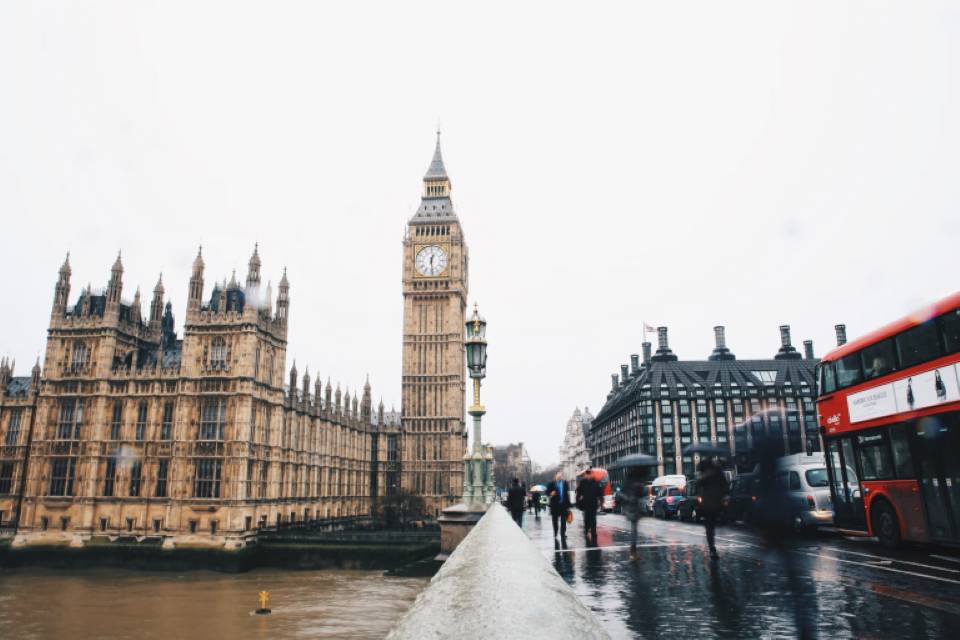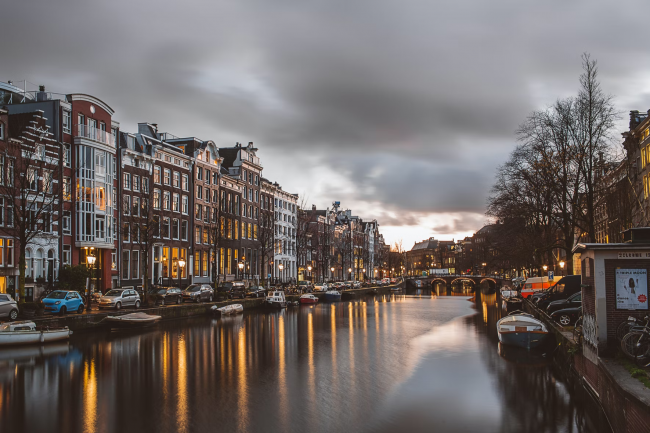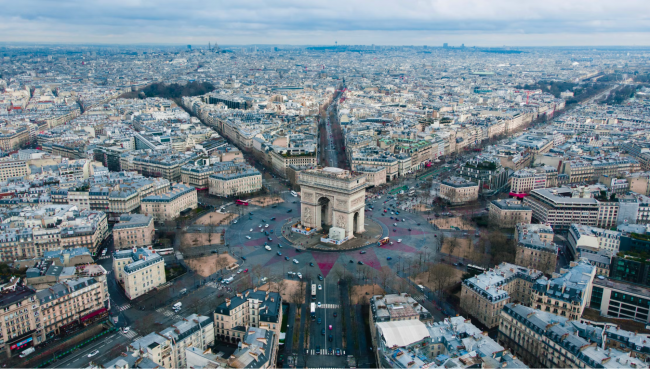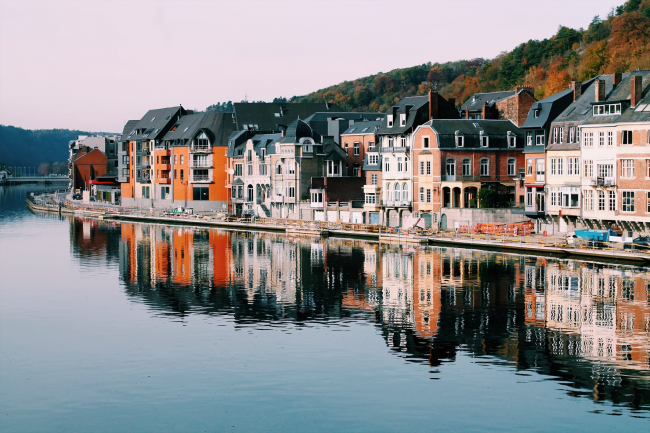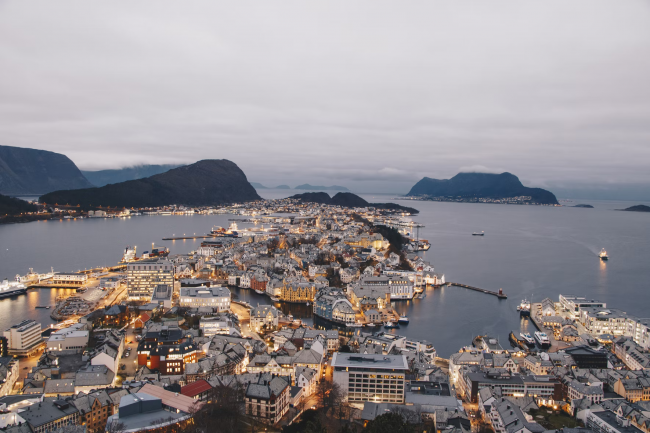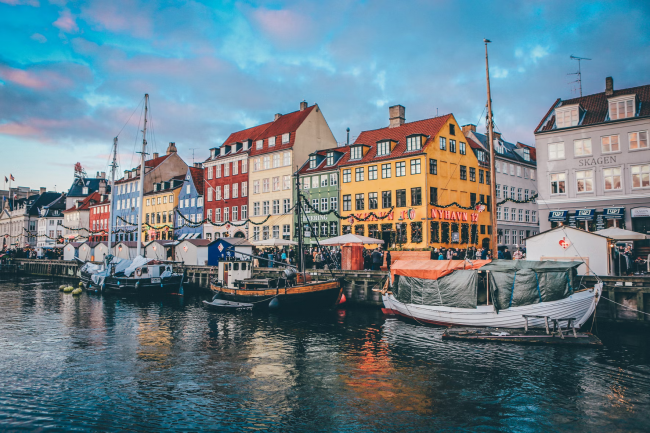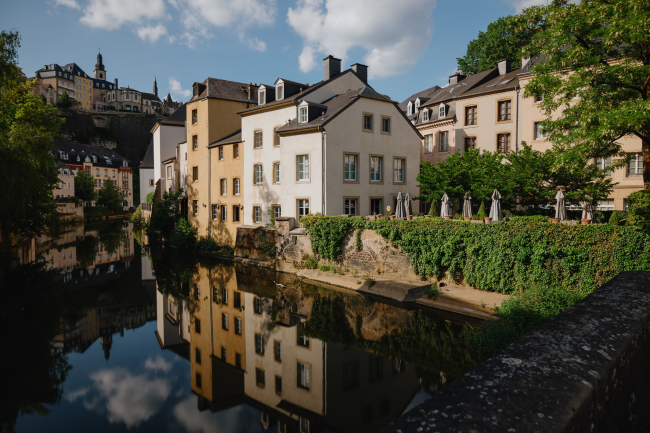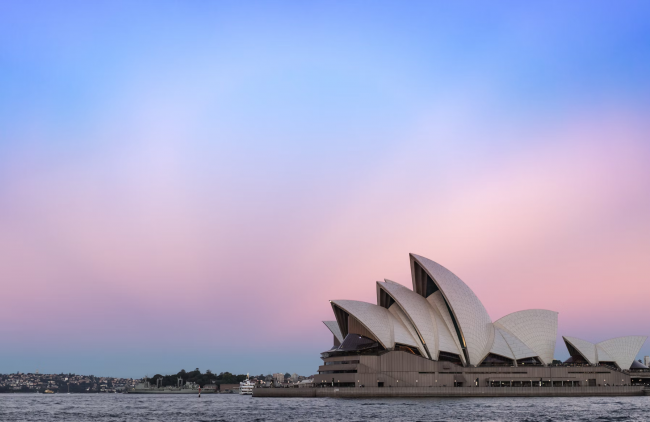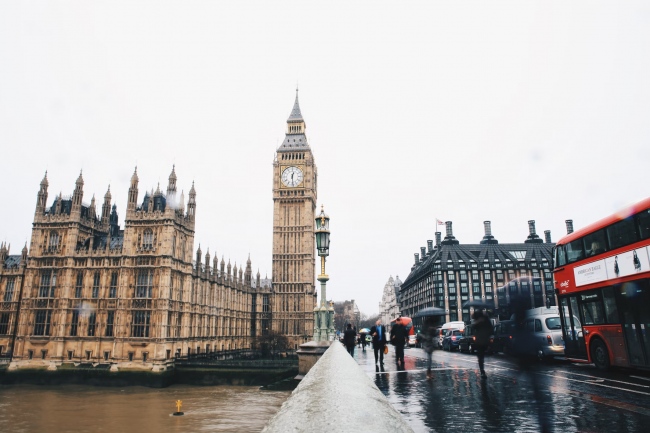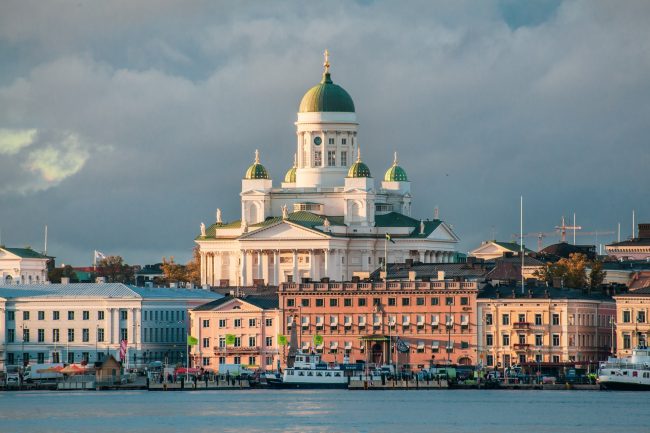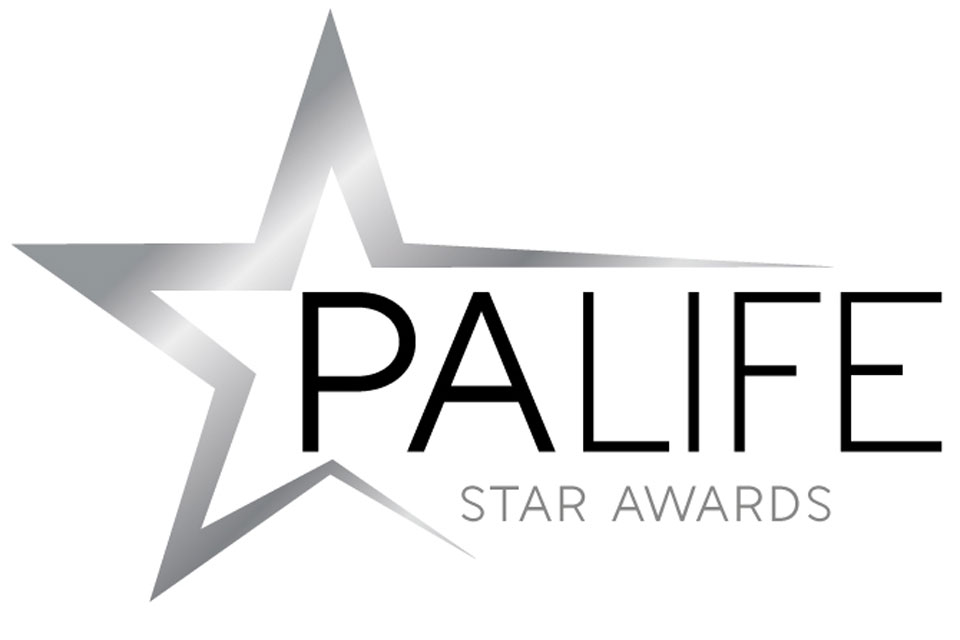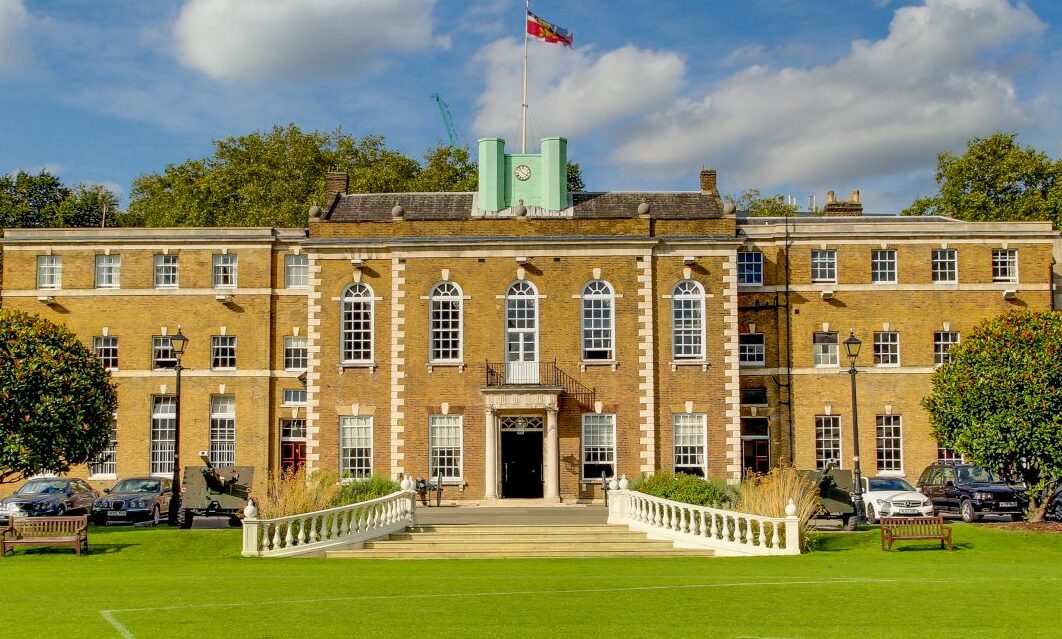We are amongst the best ten countries to work in here in the UK. The recent survey makes fascinating reading, with insights into the working environments in the best countries to work in around the world; comparing pay, parental leave, holiday entitlement as well as cultural habits.
Whether you work with colleagues or customers abroad, or even fancy working abroad yourself, these results make useful reading. What could be a better way to enhance your professional expertise and strengthen your cultural awareness than living and working abroad? Learning how businesses operate in foreign countries and having the chance to build relationships with international peers creates lasting rewards. Working abroad also allows you to increase your confidence, learn new life skills, and improve your language skills.
But before you head out to travel the world, it’s essential to do your research on work environments around the world.
This is why here at Acuity Training we have done the hard work and explored the factors that we believe influence people’s quality of life while living abroad.
Methodology
We looked at a wide variety of factors such as minimum wage, entitled break times, unemployment rates and the gender pay gap to rank the best locations to work in.
The ranking factors we explored are as follows:
- Minimum Hourly Wage (Convert to GBP)
- Weekly Working Hours
- Entitled Break Time (Minutes)
- Percentage of Employees Claiming to Work Very Long Hours
- Time Devoted to Leisure and Personal Care (Hours)
- Unemployment Rate
- Gender Pay Gap
- Maternity Leave (Weeks Paid)
- Paternity Leave (Weeks Paid)
- Holiday Entitlement (Days)
Finally, we took all these factors into account and assigned each location a score out of 200.
We then ranked the destinations by how many points they received to discover which locations are the best to work in.
Overall top 20 locations to work abroad:
Top 10 Countries with the Best Work Environments around the World
1. Netherlands
The Netherlands ranked in first place and scored 141 out of a possible 200 points.
This small country is located between Belgium and Germany in Western Europe.
It is well-known for its cheese, wooden shoes, traditional Dutch homes, windmills, tulips, coffee shops, canals of Amsterdam, Delftware, soccer, bicycles, DJs and painters.
The Netherlands has a formal business culture although hierarchies are relatively flexible and clear assertive communication is valued.
The dress code varies considerably between industries but business attire for meetings is an appropriate choice unless you are informed otherwise.
Minimum Hourly Wage (Convert to GBP): £8.50
- Weekly Working Hours: 40
- Entitled Break Time (Minutes): 30
- Percentage of Employees Claiming to Work Very Long Hours: 0.30%
- Time Devoted to Leisure and Personal Care (Hours): 15.4
- Unemployment Rate: 3.40%
- Gender Pay Gap: 14.20%
- Maternity Leave (Weeks Paid): 16
- Paternity Leave (Weeks Paid): 6
- Holiday Entitlement (Days): 20
2. France
France ranked in second place and also scored 141 out of 200 points.
France has a wide array of beautiful beaches and Mont Blanc which is amongst the highest mountains in Europe. France also has some of the most beautiful cities in Europe such as Bordeaux, Cannes, Clermont-Ferrand, Marseille, Nice, and Paris of course!
France is famous for the Eiffel Tower in Paris, its many museums, art galleries and fine cuisine. France is also known for its varied landscapes, from the mountains in the Alps to the stunning beaches of Marseille, Corsica and Nice.
French law requires that workers are away from work for at least 11 consecutive hours, so the morning workday usually begins after 8:30 am.
Workplace attire in France is normally formal, with men wearing a suit and women in smart dress pants or dresses.
- Minimum Hourly Wage (Convert to GBP): £9.07
- Weekly Working Hours: 35
- Entitled Break Time (Minutes): 20
- Percentage of Employees Claiming to Work Very Long Hours: 7.70%
- Time Devoted to Leisure and Personal Care (Hours): 16.2
- Unemployment Rate: 7.40%
- Gender Pay Gap: 15.80%
- Maternity Leave (Weeks Paid): 16
- Paternity Leave (Weeks Paid): 2
- Holiday Entitlement (Days): 37
3. Belgium
Belgium came in third place and scored 138 out of a possible 200 points.
It is a low-lying country in Western Europe that borders the North Sea between France and the Netherlands and shares maritime borders with the United Kingdom.
Belgium is most known for its chocolate, waffles, beer, and its national football team, the Red Devils. Belgium is also home to NATO headquarters and the EU Commission and European Parliament.
In Belgium it is important to be punctual and just ‘showing up’ at the office is generally not appreciated.
In terms of language, discussions or negotiations can be made in English, Dutch, French or German.
It is better in Belgium to be well-dressed than under-dressed and you should assume a jacket is required. Workers should aim for elegant and smart rather than fashionable.
- Minimum Hourly Wage (Convert to GBP): £8.39
- Weekly Working Hours: 38
- Entitled Break Time (Minutes): 15
- Percentage of Employees Claiming to Work Very Long Hours: 4.30%
- Time Devoted to Leisure and Personal Care (Hours): 15.5
- Unemployment Rate: 5.60%
- Gender Pay Gap: 5.30%
- Maternity Leave (Weeks Paid): 15
- Paternity Leave (Weeks Paid): 2
- Holiday Entitlement (Days): 20
4th equal place – Norway and Ireland
Norway came in fourth equal position for best work environments and scored 136 out of a possible 200 points.
It is located in Northern Europe and occupies the western half of the Scandinavian peninsula. It has borders with Sweden, Finland and Russia on the east side.
Norway is famous for its fjords (long, narrow inlets with steep sides or cliffs, created by glaciers), lakes and magical skies. It is also well-known for Vikings and folklore, and for being eco-friendly.
While Norwegian workplaces are hierarchical, there is also great emphasis placed on the belief that all employees can express their opinion.
In Norway, there is a great emphasis on equality regardless of an individual’s gender, ethnicity, sexual orientation, religion or political views.
Despite Norway’s hierarchical structure, there is an informal tone among coworkers in Norway. Norwegians generally dress in a smart, casual style of dress in the office.
- Minimum Hourly Wage (Convert to GBP): None
- Weekly Working Hours: 37.5
- Entitled Break Time (Minutes): 30
- Percentage of Employees Claiming to Work Very Long Hours: 1.40%
- Time Devoted to Leisure and Personal Care (Hours): 15.7
- Unemployment Rate: 3.40%
- Gender Pay Gap: 13.40%
- Maternity Leave (Weeks Paid): 15
- Paternity Leave (Weeks Paid): 15
- Holiday Entitlement (Days): 25
4th equal place – Ireland and Norway
Ireland came in fourth equal place and scored 136 out of a possible 200 points for the best work environments around the world.
The Republic of Ireland’s capital is Dublin which is located off the coast of England and Wales.
The Republic of Ireland is also referred to as “the Republic”, “Southern Ireland” or “the South” and is most famous for Saint Patrick, Guinness, Rugby, its music, football, and Riverdance (Lord of the Dance), Irish hospitality and its rugged landscape.
The work culture in Ireland is similar to the United Kingdom, and workplace hierarchies are usually relaxed. People use first names and socialising with colleagues is common.
The standard business dress in Ireland is smart and conservative and formal suits work best in most workplaces.
Minimum Hourly Wage (Convert to GBP): £8.75
- Weekly Working Hours: 39
- Entitled Break Time (Minutes): 30
- Percentage of Employees Claiming to Work Very Long Hours: 4.70%
- Time Devoted to Leisure and Personal Care (Hours): 14.5
- Unemployment Rate: 5.20%
- Gender Pay Gap: 5.10%
- Maternity Leave (Weeks Paid): 26
- Paternity Leave (Weeks Paid): 2
- Holiday Entitlement (Days): 20
6. Denmark
Denmark placed sixth and scored 135 out of 200 points.
Denmark is a country in northern Europe. It is made up of the Jutland Peninsula and more than 400 islands in the North Sea. It shares a border with Germany to the south.
Denmark, like the rest of Scandinavia, is well-known for its high-quality design and architecture, being Hans Christian Andersen’s birthplace, for the Little Mermaid statue, and for being the Happiest Nation in the world.
The workplace culture in Denmark is informal, open and laid-back.
Danes appreciate humour and irony, which are typical elements of a Danish workplace setting. The Danish way of working is very collaborative with everybody expected to pitch in with their ideas and opinions without this causing team conflict.
There is generally no dress code and workers communicate informally with each other.
- Minimum Hourly Wage (Convert to GBP): None
- Weekly Working Hours: 37
- Entitled Break Time (Minutes): 30
- Percentage of Employees Claiming to Work Very Long Hours: 1.10%
- Time Devoted to Leisure and Personal Care (Hours): 15.7
- Unemployment Rate: 2.70%
- Gender Pay Gap: 13.90%
- Maternity Leave (Weeks Paid): 18
- Paternity Leave (Weeks Paid): 2
- Holiday Entitlement (Days): 25
7. Luxembourg
Luxembourg came in seventh place and scored 133 out of a possible 200 points.
It is a landlocked country in Western Europe and shares international borders with Belgium to the west and north, Germany to the east, and France to the south.
Luxembourg is famous for its high GDP, good wages and being one of the smallest countries in Europe.
In the workplace in Luxembourg, hierarchies are distinct, strict, and comparatively steep.
They reflect the influence the Christian religion has on the country and the effect this has had on social values and protocol in the country.
Workers with a high level of seniority receive great levels of respect from those below them. Dress codes are formal and conservative in Luxembourg.
Minimum Hourly Wage (Convert to GBP): £10.36
- Weekly Working Hours: 40
- Entitled Break Time (Minutes): None specified
- Percentage of Employees Claiming to Work Very Long Hours: 2.80%
- Time Devoted to Leisure and Personal Care (Hours): 15.1
- Unemployment Rate: 4.90%
- Gender Pay Gap: 0.70%
- Maternity Leave (Weeks Paid): 20
- Paternity Leave (Weeks Paid): 2
- Holiday Entitlement (Days): 32
8. Australia
Australia came in eighth place and scored 131 out of 200 points.
Australia has a highly-skilled workforce and proud history of democracy and a stable government.
90% of Australians live on the coast, the large deserts of central Australia mean that the majority of the Australian population live on the shores of the huge country.
Australia is world-famous for its natural wonders and wide-open spaces, its beaches, deserts, “the bush”, and “the Outback”. The country is also well-known for its opera house, the harbour bridge, Bondi Beach, kangaroos, koalas, and the Great Barrier Reef.
Australian work culture is generally relaxed, however, it’s considered rude to be late to work or meetings.
A standard workweek is 38 hours in Australia, although many people work much longer hours.
People in trades and outdoor work usually start work before 7 am and office workers often begin between 8 and 8.30 am.
- Minimum Hourly Wage (Convert to GBP): £11.02
- Weekly Working Hours: 38
- Entitled Break Time (Minutes): 30
- Percentage of Employees Claiming to Work Very Long Hours: 12.50%
- Time Devoted to Leisure and Personal Care (Hours): 14.4
- Unemployment Rate: 4%
- Gender Pay Gap: 12%
- Maternity Leave (Weeks Paid): 18
- Paternity Leave (Weeks Paid): 2
- Holiday Entitlement (Days): 20
9. United Kingdom
The United Kingdom placed ninth and also scored 131 out of 200 points for best work environments.
It is the largest island in Europe and consists of four countries: England, Scotland, Wales, and Northern Ireland.
The United Kingdom is famous for Big Ben, Red Buses, the Royal family and Windsor Castle. The country is also well-known for its rugby, cricket, boxing, and golf which were all invented in Britain. And the United Kingdom has also produced some great writers, including William Shakespeare, Charles Dickens, and Robert Burns.
One prominent thing about the UK’s workplace culture is that it is generally more relaxed and social than in other countries.
Colleagues socialise with each other outside of work and it’s not uncommon for birthdays to be celebrated with cake or a relaxed afternoon of socialising. However, this does not mean that people in the UK don’t work hard.
- Minimum Hourly Wage (Convert to GBP): £8.91
- Weekly Working Hours: 40
- Entitled Break Time (Minutes): 20 (however it is common to have between 30 minutes and one-hour breaks in the UK)
- Percentage of Employees Claiming to Work Very Long Hours: 10.80%
- Time Devoted to Leisure and Personal Care (Hours): 14.9
- Unemployment Rate: 3.40%
- Gender Pay Gap: 12.30%
- Maternity Leave (Weeks Paid): 39
- Paternity Leave (Weeks Paid): 2
- Holiday Entitlement (Days): 20
10. Finland
Finally, Finland ranked in tenth place for the world’s best work environments and scored 120 out of a possible 200 points.
The country is located in northern Europe and is one of the world’s most northern and geographically remote countries.
Finland is well-known for being the happiest country in the world and having the world’s best education system. Finland is also famous for its saunas, reindeers and the Santa Claus village.
Finnish workplace culture is generally similar to other Nordic nations, as the country values equality in the workplace and has a flat hierarchy.
Finns expect well-defined targets and processes and they also take authority and responsibilities seriously.
In the workplace, Finns generally prefer business attire that is stylish and conservative unless stated otherwise. They wear fitted and tailored suits or the equivalent and are well-groomed. It is important to note that you shouldn’t remove your suit jacket in Finland unless the host does so first, even during meals.
- Minimum Hourly Wage (Convert to GBP): None
- Weekly Working Hours: 40
- Entitled Break Time (Minutes): 60
- Percentage of Employees Claiming to Work Very Long Hours: 3.60%
- Time Devoted to Leisure and Personal Care (Hours): 15.2
- Unemployment Rate: 6.7%
- Gender Pay Gap: 16.70%
- Maternity Leave (Weeks Paid): 18
- Paternity Leave (Weeks Paid): 11
- Holiday Entitlement (Days): 25
Choosing the right country is key when choosing to work abroad.
Hopefully, this article will help you make the right choice when you are looking at your options on which country to work in.



